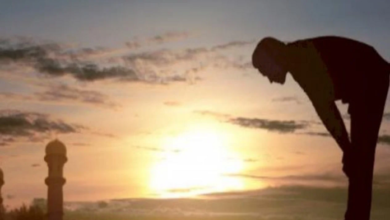The Impact of the Expansion of the Haram Mosque: Historical Traces of Makkah Sirna

 DDHK News, Saudi Arabia - On August 19, 2011, King Abdullah bin Abdul Aziz laid the first stone marking the massive renovation of the Grand Mosque Complex that he initiated.
DDHK News, Saudi Arabia - On August 19, 2011, King Abdullah bin Abdul Aziz laid the first stone marking the massive renovation of the Grand Mosque Complex that he initiated.
This expansion project is carried out on an area of 400 thousand square meters. King Abdullah bin Abdul Aziz called it King Abdullah Expansion.
The king wanted the Grand Mosque to be looser. Thus, the mosque can accommodate an additional 1,2 million worshipers.
The government of the Kingdom of Saudi Arabia has allocated US $ 21 billion to finance this big project.
Everything is handled using sophisticated mechanical and electrical systems. A number of bridges were built connecting the mosque with sai places, namely Safa and Marwah. A modern waste management and security monitoring system was created.
Development Makkah Royal Clock Tower or the tower clock to accompany the expansion of the Grand Mosque. This is the second tallest tower in the world after Burj Khalifa in Dubai, United Arab Emirates. This giant clock is part of the building Makkah Clock Tower Hotel.
The building height reaches 601 meters with 76 levels and 858 rooms. It is located facing the Grand Mosque. Loudspeakers in the clock tower are complementary. The point is to say the call to prayer. From here, the sound of the call to prayer can be heard up to a distance of seven kilometers.
By 2020, it is estimated that all expansion projects in Makkah and the Grand Mosque will be completed. On August 14, 2012 Saudi Arabia also set plans to modernize the transportation system in Makkah. In it, including the bus and metro networks.
The project value exceeded 16,5 billion US dollars. Metro lines with a length of 182 km are built throughout the city with 88 stations.
The construction of this huge project will be built within 10 years. A year earlier, another big plan was revealed.
Within six years, the Makkah City Government was determined to make new roads in Makkah. Another long-term project around the Grand Mosque is the establishment of hotels, shopping centers and cafes. In the Suburban area, housing and garden complexes are provided.
These facilities are intended for residents who are relocated from the city center. On the other hand, a critical voice emerged.
"What we want is the development of Makkah, not changing it," said Sami Angawi, founder of the Hajj Research Center and an expert on Makkah.
This discomfort made Angawi, who is originally from Makkah, no longer set foot in his hometown since 2009.
He was not happy with the way Makkah was transformed. According to him, development often displaces historical places.
"I love Mecca and cannot bear to see this Prophet's City destroyed," said Angawi. He has no objection to the expansion of the capacity of the Grand Mosque.
Moreover, the expansion was for the benefit of the congregation. He admitted that he did not feel comfortable with the tower clock. In his view, the tower clock shows no respect for the Kaaba.
“Makkah is the heart of the Islamic world. What our government is doing is changing the heart from natural to mechanical, ”said Angawi, who now lives in Jeddah.
The clock tower, which has risen to 610 meters since 2011, stands in a former fortress during the Ottoman Empire.
The Ajyad Fortress was built in 1781 to intercept bandits. In 2002 the fort was evicted, missing without a trace.
Angawi said that the house of the Prophet's friend, Abu Bakr, is now where the Hilton Hotel stands. Meanwhile, the house of the Prophet's grandson was flattened for the king's palace. "They turned the holy place into a machine," said Angawi.
According to him, Makkah is now a city without identity, culture, heritage and natural environment. Angawi said there was no place in the world apart from Makkah which started development by bulldozing buildings first.
There should be a new construction plan to bulldoze the building. If things stop now, it's not too late.
"If not, we will run the risk of losing the sanctity of Mecca forever," explained Angawi.
Wafa Sbbet (50 years), a Muslim from Sydney, Australia, who had the pilgrimage in 2011 felt the same feelings as Angawi.
Makkah designs are no longer characterized by traditional Arabic. What they make, he said, is like buildings in Australia.
"It doesn't make me feel like I'm in Arabia or Mecca," said Sbbet. Director of the Islamic Heritage Research Foundation Irfan Alawi is also equal to three money. According to him, Saudi Arabia is trying to destroy anything that has to do with the Prophet Muhammad.
They bulldozed the house of the Prophet's wife, Khadija, his grandson and his friends. "Now, they are advancing to the birthplace of the Prophet. What for? Seven star hotel, "he said, as quoted by the news page Guardian, October 14, 2013.
At the foot of the Khandama Mountains, west of the Grand Mosque, a white building stands. This is a small library to mark the place of the Prophet's birthplace. Known by name Maulid's house. The building is under threat from development plans.
At that location, an underground car park and a metro line will be built. The two buildings are needed to overcome the increase in visitors to Makkah. By 2025, the target of visits is 17 million people.
Across the street from the library, the house of Muhammad's wife, Khadijah, had a face. Now, in the form of a block containing 1.400 public toilets. The 1.400-year-old well, Bir Tuwa, where the Prophet spent the night, is also in danger.
The location in the vicinity has stood a number of hotels. It seems that, said Alawi, this well will have the same fate. Inside the Grand Mosque, previously there were domes and stone pillars that are 500 years old from the Abbasid dynasty. But, now it has been destroyed without a trace.
The stone pillar contains carved poetry narrating the journey of the Prophet Muhammad and the pilgrimage sites. To the north of the Grand Mosque, to be precise the Shalmiya area, 400 thousand square meters of land is used to expand prayer areas.
This new place can accommodate 1,2 million worshipers per year. This project redeemed a high price. Shalmiya, the most historic part of the old city of Makkah, disappeared. Everything has been leveled to the ground. Citizens living from one generation to another in Shalmiya were relocated.
He stated that luxury hotels will stand in a number of projects near the Grand Mosque. Not only clock towers, but also other projects, such as Jabal Khandama. "This is the story of the end of Mecca. Then for what? " asked Alawi.
Most of the hotels that are already standing near the Grand Mosque are only half filled. The malls are also empty. This is because renting space there is too expensive for the former merchant at the Seng Market stall that has been evicted.
However, since the beginning, King Abdullah emphasized that the expansion of the Grand Mosque is a religious obligation. The expansion is necessary to accommodate the expanding pilgrims. "We have laid the groundwork for the renovation of the Grand Mosque and other projects."
The king's move won the support of a senior Saudi Arabian cleric, Sheikh Saad bin Nasser al-Shathri. In the Guardian report, October 4, 2013, he asked the world's Muslims to support the ongoing expansion project of the Grand Mosque. (cnn / reuters / republika.co.id). *



